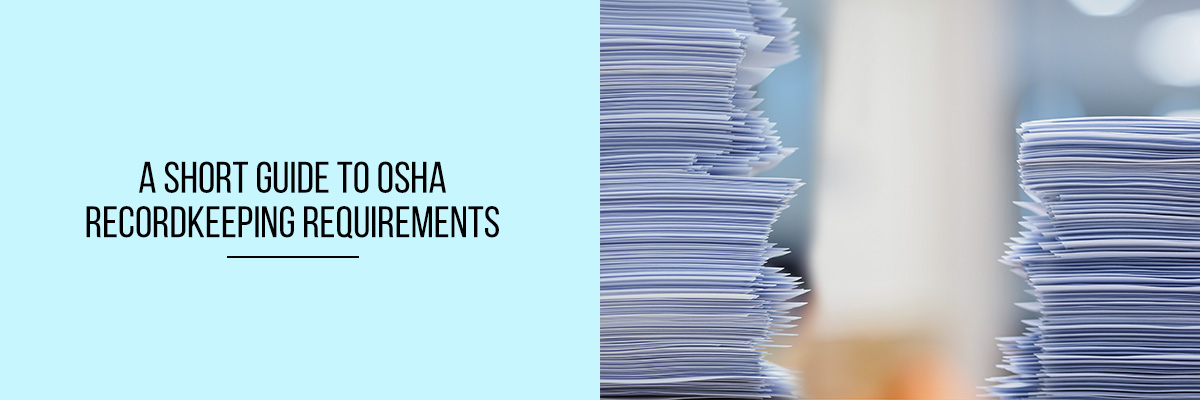With the Occupational Safety and Health Administration (OSHA) and the National Institute for Occupational Safety and Health (NIOSH) making recordkeeping compliance a top priority, the first point of defense is a complete and up-to-date OSHA 300 log. A log that is regularly updated with the correct information protects employers from fines and other penalties, and can also keep your employees safer. But OSHA’s requirements for the OSHA 300 log are actually quite broad, and not all OSHA recordkeeping requirements are as well-known.
OSHA requires employers to keep several types of records related to workplace hazards. OSHA 300 logs document workplace injuries and illnesses, OSHA 301 logs record work-related injuries and illnesses that do not result in lost time from work, OSHA 302 logs record workplace injuries and illnesses that result in lost time from work, and OSHA 301C reports record work-related fatalities. Each year, you must submit these logs to OSHA within 300 days after the end of the previous year. For example, 2017 records must be submitted by March 6, 2018. The good news is that OSHA has made this process easier by allowing you to submit your records electronically.
What Are the OSHA Injury and Illness Recordkeeping Forms?
The OSHA recordkeeping requirements incorporate three forms, OSHA 300, OSHA 301, and OSHA 300a. The OSHA Form 300 is the sanctioned log where the details of the illnesses and injuries that occur in the workplace are documented. Form 300 includes three major parts:
- Identifying the injury/illness
- Describing the injury
- Classifying the injury using the checkboxes
COVID-19 OSHA Recordkeeping Requirements
OSHA updates its requirements for COVID-19 regularly to ensure compliance with the latest safety and health standards. OSHA requires companies to record all COVID-19 cases which meet recording criteria in 29 CFR 1904.7. It means that COVID-19 varies from the flu. Organizations are not obliged to record flu cases, even if the flu is spread in the workplace.
Why OSHA Has Strict Recordkeeping Requirements?
OSHA’s recordkeeping requirements exist to help you, the employer, protect your employees from workplace injuries and illnesses. Recordkeeping requirements help you identify patterns in workplace hazards and illness and injury rates so that you can correct hazardous conditions and prevent future injuries and illnesses.
In order to track illnesses and injuries, all companies must keep a separate record of each work-related injury or illness. The record must include the correct OSHA form number, the date and time of the incident, the name, address, phone number, age, and occupation of the injured or ill person, the nature of the injury or illness, the events and circumstances relating to the injury or illness, the name and product identification of any substance or thing that caused or contributed to the injury or illness.
Attend the Compliance Prime webinar to know more about OSHA recordkeeping requirements in 2021.


